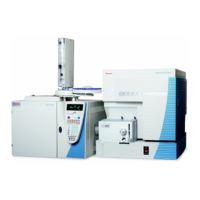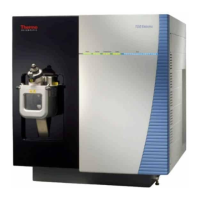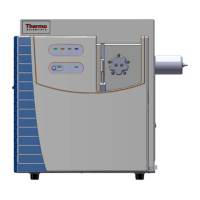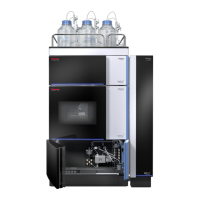17
Scan Types
Precursor Scan Type
Thermo Scientific TSQ Altis, Quantis, and Fortis Hardware Manual 75
Precursor Scan Type
The precursor scan type also uses two stages of analysis (Figure 38). In the first stage, the ion
source forms ions that are introduced into the precursor mass analyzer, which is scanned to
transmit precursor ions sequentially into the collision cell.
In the second stage of analysis, in the collision cell, precursor ions can fragment to produce
product ions by unimolecular decomposition of metastable ions or by CID. The collision cell
forms ions that enter the product mass analyzer, which transmits a selected product ion. (The
product set mass is the m/z of ions transmitted by the product mass analyzer.)
The resulting spectrum shows all the precursor ions that fragment to produce the selected
product ion. For a mass spectrum obtained in the precursor scan type (precursor mass
spectrum), note that data for the m/z axis is obtained from Q1 (the precursor ions), whereas
data for the ion intensity axis is obtained from Q3 (from monitoring the product ion).
Figure 38. Illustration of the precursor scan type
You can use experiments that employ the precursor scan type (precursor experiments) in
structure and fragmentation studies as well as in survey analyses of mixtures. In general,
precursor experiments detect all compounds that decompose to a common fragment. You can
use the experiments for the rapid detection of a series of structural homologs (for example,
substituted aromatics, phthalates, steroids, or fatty acids) that have a common fragment ion
(for example, m/z 149 for the phthalates).
Neutral Loss Scan Type
In the neutral loss scan type (Figure 39), the two mass analyzers (Q1 and Q3) link together so
that they are scanned at the same rate over mass ranges of the same width. However, the
respective mass ranges, are offset by a selected mass so that the product mass analyzer scans a
selected number of mass units lower than the precursor mass analyzer.
Q2
RF Only + Ar
Q1 Scanning Q3 Set
Q1 m/z

